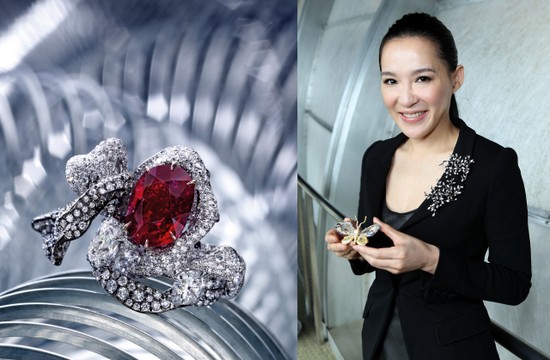The growth of coloured gemstone jewellery
Diamonds and emeralds have adorned the jewellery of the wealthy and powerful ever since the time of Antony and Cleopatra and modern fashion trends seem to show that there is no let up in this fact. One recent demonstration of this was the the ‘Patino’ emerald and diamond Cartier necklace, sold in Geneva recently for $10 million (US), double its reserve price! Joana Hardy, jewellery expert and author of “Emerald: Twenty-one Centuries of Jewelled Opulence and Power,” recently stated that “The price for high-quality emeralds has increased by a factor of 10 since 2009, and the price of Colombian emeralds is set to increase by at least 25% this year alone.” This is driven in part by the little known fact that emeralds are actually over 20 times rarer than diamonds and they are only sourced in significant numbers in Colombia, Brazil and Zambia. Only the Muzo and Chivor mines in Colombia produce the finest quality emeralds with the richest and deepest hue.

The growth of the coloured gemstone market lead directly to the first International Emerald Symposium in Bogota, Colombian in October 2015. The aim of this gathering was to bring together “producing countries, gemmological laboratories, wholesale and manufacturing companies, luxury brands, government, and international gems and jewellery associations” so that they can “converge in one venue to share the latest developments of the emerald sector, and address all issues related to promotion, production, enhancement, and other concerns.” From the point of view of emerald interests in Colombia, this was an ideal opportunity for them to showcase one of their major national resources but it also demonstrated the level of global demand and interest in these stones. With future emerald supplies uncertain and limited new reserves being discovered in recent times, the industry is trying to co-ordinate its activities in an unprecedented fashion.

Angela Monaghan of the Guardian newspaper has summarised the 21st Century coloured gem market with the observation: “people now understand that there are other stones that are also getting good prices. There are more people with money and there aren’t enough [stones] to go around!” Globalisation has had a profound effect on every facet of the industry and it has, in fact, impacted the gem market far later than many others. Large luxury brands, such as Graff, Tiffany & Co, Cartier and Van Cleef & Arpels, have been slow to engage with the burgeoning markets that are opening up across the Asia-Pacific region. In fact Tiffany & Co, perhaps the most international of all the top ten jewellery marques, only opened its first store in China as recently as 2001 and Graff as late as 2010. It has now become clear that emerging markets are the new engines for grow when it comes to precious stones and they will undoubtedly begin to set new trends within the market.

As a new metropolitan elite come to the fore in the Far East, they have begun a process of developing new styles and fashions that are beginning to excite collectors around the world. An example of one of the driving forces behind this development is Cindy Chao, who has stated that her creative raison d’être is to “fuse eastern and western hallmarks into a distinctive aesthetic.” The mass appeal of coloured gemstones in the emerging economies is a crucial factor in the industry’s future success, the realisation of which has been clearly demonstrated by the 1st International Emerald Symposium in Bogota in recent weeks.
Visit London DE’s blog to explore similar articles.


